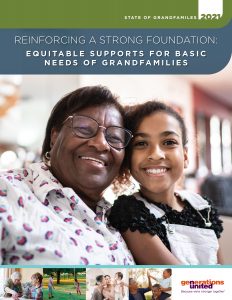Download the executive summary
Download the full report in Spanish
Watch the recording of the event
There are 2.6 million children in the United States growing up in grandfamilies, meaning they are raised by relatives or family friends without their parents in the home. While grandfamilies are of all geographic locations, socio-economic levels, and races/ethnicities, Black, American Indian, and Alaska Native children are the most likely to be in grandfamilies. Grandfamilies arise out of events that separate children from their parents, such as death, including from COVID-19, substance use, incarceration, mental illness, divorce, or military deployment. The systems and services that help U.S. families — in areas such as housing, education, and health care — were not designed for grandfamilies. For grandfamily caregivers, something as simple as enrolling children in school or taking them to the doctor can be difficult, if not impossible. The way our country determines the quality and level of support for families is unjust, and too often services are obsolete. They exclude the needs of children growing up in grandfamilies and make America’s racial disparities worse.
This year’s annual State of Grandfamilies report highlights how the systems and services that help U.S. families were not designed for grandfamilies, leaving children and caregivers in these families with inequitable access to key resources to help their families thrive. The report highlights include updated national and state data on grandfamilies and key recommendations to address inequities and provide critical supports to serve grandfamilies well.
